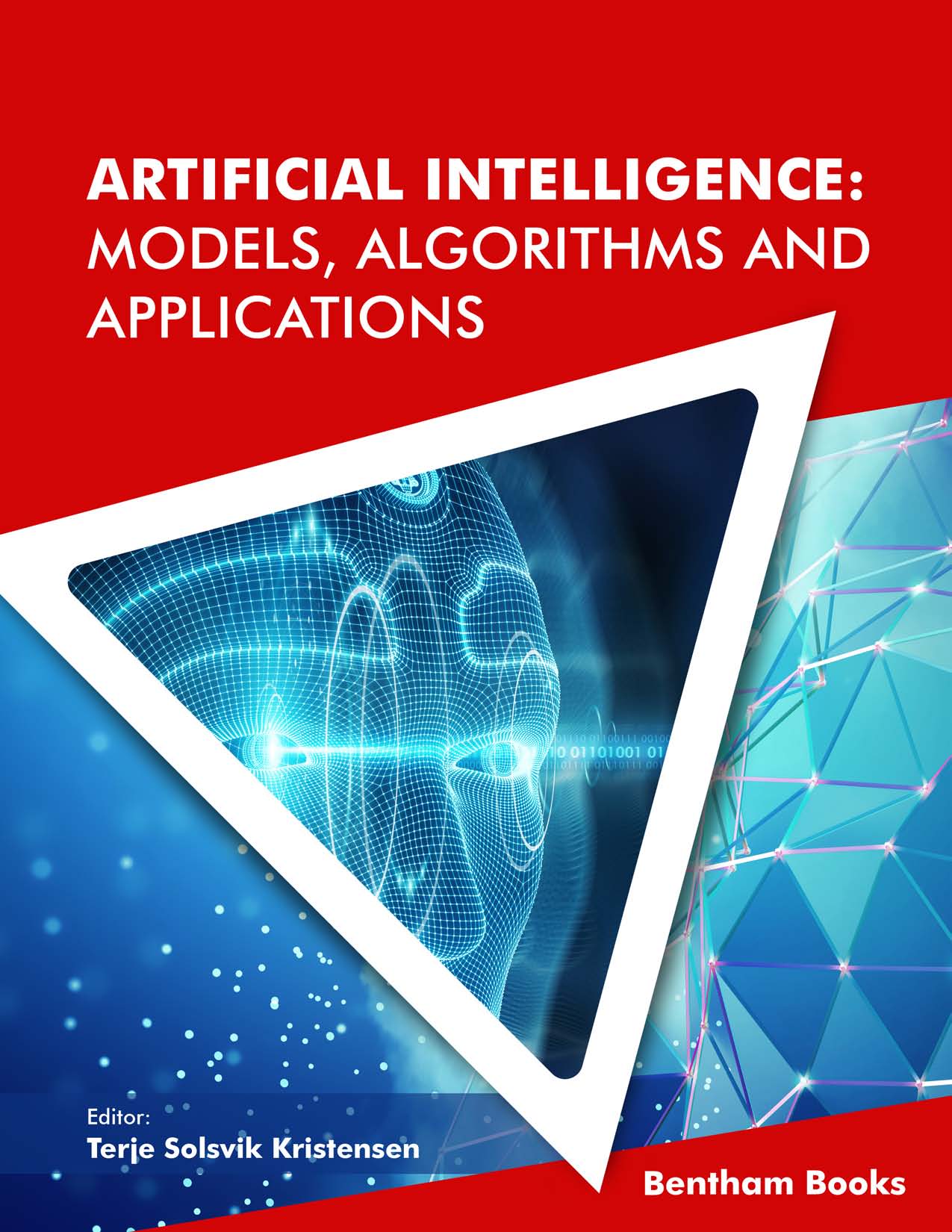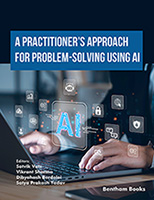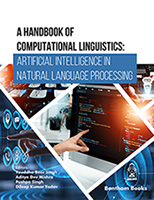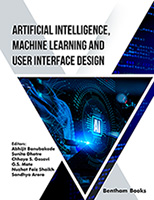This book entitled ‘Artificial Intelligence: Models, Algorithms and Applications’ consists of eight chapters. The book focuses on new achievements in AI and how AI may be introduced in different application areas, and how these areas may be changed when AI models and algorithms are used.
AI introduces new approaches to solve complex problems. It is interesting to note that AI introduces a significant shift in new models and algorithms. Advances in instrument technologies have seen a significant shift as far as the tools and techniques are concerned. Subsequently, it has made and is going to make equally powerful impact on the process and manufacturing industry through Industry 4.0.
The aim of this book is to give an introduction to the field of AI, its models and algorithms and how this may be used to solve problems in different application areas.
The book is primarily intended for students, researchers and engineers that are interested in AI and how it may be used to solve concrete problems. The structure of the book is organized as several different topics. We hope that technology developers and companies also find it interesting to be used in industry.
We do not yet have any chapter about how to use AI in Robotics and in Natural Language Processing (NLP). These are important fields where AI methods are very relevant to use and also give good results. NLP is also the field where I started to use AI algorithms for about twenty years ago. If there is going to be a new edition of the book it should be natural to extend it with these chapters.
The book consists of eight chapters which have been described concisely one by one below:
-
1.
From AIS Data to Vessel Destination Through Prediction with Machine Learning Techniques by Wells Wang, Chengkai Zhang, Fabien Guillaume, Richard Halldear, Terje Solsvik Kristensen, Zheng Liu
The destination of vessels is an important decision maker in maritime trading. However, shipping companies keep this kind of data inclusively, which results in the absence of complete information of destination for every vessel. However, other information such as the position can be available due to Automated Identification Systems (AIS). Hence, predicting the vessels’ destination port becomes possible. To give a baseline of how to make use of AIS data for vessel destination prediction with machine learning, several AIS data preprocessing approaches and machine learning approaches for vessel destination prediction are introduced in the literature. The chapter aims to give the audience an idea of how to link between AIS data, trajectories, and numerous machine learning models for the purpose of predicting arrival ports for maritime services. Furthermore, the discussion points out the current state of research on this topic and where the potential future work may possibly lie in.
-
2.
AI in Mental Health by Suresh Kumar Mukhiya, Amin Aminifar, Fazle Rabbi, Violet Ka I Pun and Yngve Lamo
Managing the prevalence of mental health problems is both socially and economically challenging. Technological advancement in recent decades has provided potential solutions to this issue. In particular, Artificial Intelligence (AI) is one of the research areas that has expanded into behavioural, neurological and mental healthcare by fulfilling the main objectives of P4 medicine - personalized, predictive, preventive and participative medicine. In this chapter, we give an overview of recent applications of AI for screening, detection, and treatment of mental health problems; summarize the economic and social implications; present a systematic overview of which AI technologies are used for the different mental disorders and identify challenges for further development. Based on this, we identify some future research questions that could be solved with the use of AI in mental healthcare. The chapter concludes with an in-depth discussion on the key challenges of the application of AI in mental health interventions.
-
3.
Deep Learning in Radiology by Madhura Ingalhalikar
Recent developments in artificial intelligence (AI), particularly deep learning (DL) algorithms have demonstrated remarkable progress in image recognition and prediction tasks. These are now being applied in the field of radiology on medical images to quantify, characterize, classify as well as monitor various pathologies. Such DL based quantifications facilitate greater support to the visual assessment of image characteristics that is performed by the physician. Furthermore, it aids in reducing inter-reader variability as well as assists in speeding up the radiology workflow. In this chapter, we provide an insightful motivation for employing DL based framework followed by an overview of recent applications of DL in radiology and present a systematic summary of specific DL algorithms pertaining to image perception and recognition tasks. Finally, we discuss the challenges in clinical implementation of these algorithms and provide a perspective on how the domain could be advanced in the next few years.
-
4.
AI in Instrumentation Industry by Ajay V. Deshmukh
Artificial intelligence (AI) as the name suggests is a new way of automatically deciding upon the operation and control of real time machines and processes in industry. The advantages of using artificial intelligence in industry are many. First of all the decisions are dynamic and real time without any human intervention. Next, it is not based on any formula which in the past required updating for different process conditions and time. Operational technologies did not deploy complete intelligence systems and there used to be much more complexity in tuning the processes and systems together. Training of the operational people was very much crucial and required periodic updates from time to time as the operational technologies changed. AI can overcome most of these complexities, due to the fact that it obtains a data driven solution in real time. Intelligence could be distributed right from the sensory levels to higher levels of distributed computerized systems. Internet of Things (IoTs) and data analytics can provide dynamic information on the performance of machines and processes. Industries which would benefit from technologies based on Artificial Intelligence (AI), Machine Learning (ML) and Deep learning (DL) are in general any process or manufacturing industries including healthcare, petroleum, power sector, automotive etc. In fact, this would lead to applicability of Industry 4.0. In this chapter different concepts and applicability of AI in industry have been described. Off course it is possible due to the powerful computational tools, which help not only in doing computations, but also in terms of the capability of communication control, plus data storage, transmission and intelligent decision making.
-
5.
AI in Business and Education by Tarjei Alvaer Heggernes
In recent years, the interest for artificial intelligence has gone from the computing department to the board room. Business leaders are in a rush to explore the possibilities presented by the abundance of data, processing power and the methods of AI to create business value and business opportunities. In this chapter we will adapt the view of a manager and explore some of technologies used in machine learning. We will also look at how managers should approach artificial intelligence. The chapter will close with a discussion of some use cases of the different technologies. On case will come from marketing and discusses the use of reinforcement learning in real-time bidding on an e-commerce platform. The next two cases are from the education industry, one case will discuss reinforcement learning in intelligent tutoring systems, and the final case will discuss neural networks in grading of tests and assignments. There are many exciting use cases for artificial intelligence, it is important for business managers to understand the possibilities, and equally important for programmers to understand how businesses create value.
-
6.
Extreme Randomized Trees for Real Estate Appraisal with Housing and Crime Data by Junchi Bin, Bryan Gardiner, Eric Li, and Zheng Liu
Real estate appraisal plays a vital role in people’s daily life. People rely on the estimation of decisions on buying houses. It is well recognized that the criminal activities around the house have significant impacts on house prices. House buyers can make more reasonable decisions if they are aware of the criminal activities around the house. Therefore, a machine learning-based method is proposed by combining house attributes and criminal activities. Specifically, the method firstly infers the intensity of criminal activities from historical crime records. Then, a novel machine learning algorithm, extremely randomized trees (ExtraTrees), is implemented to estimate the house price based on the extracted comprehensive crime intensity and real-world house attributes. The experimental results show that the proposed method outperforms contemporary real estate appraisal methods by achieving higher accuracy and robustness.
-
7.
The Knowledge Based Firm and AI by Ove Rustung Hjelmervik, and Terje Solsvik Kristensen
Radical innovation is disruptive. It is a change that sweeps away much of a firm’s, or an entire industry’s, existing investment in technological assets, skills and knowledge. Such innovation has occurred throughout history and wealth has been accumulated in its wake. Companies have flourished as a result of such ingenuity, yet there is no evidence in the literature that radical innovation is a result of senior management’s decision, rather it takes place through learning. In order to understand what drives a knowledge-based organization, one has to look at the inside of the firm where implemented structures and tools are supporting employees’ empowerment to unleash their creativity. What the firm knows is stored in the employees’ head and in the firm’s procedural structure, and the firm learns in two ways - by its employees and through hiring new employees. Thus, development of radical innovation, such as artificial intelligence (AI), will either be learned by the firm’s employees and/or through hiring experts. Whenever management prevents new methods from being applied, or employees refuse to acknowledge and learn new techniques, productivity suffers, resulting in firm and industry obsolescence. This is exactly what’s happening in the case of AI. Almost eighty years after Alan Turing introduced AI theory, we see a world flabbergasted by its potential impact on productivity. Our case study is based on interviews of a dozen or so R&D managers in private and public sectors. Although our observations are not a guarantee to lead to a consistent agreement or interpretation, valid knowledge that can lead to better performance and organizational survival, may nevertheless provide useful learning for relevant readers.
-
8.
A Mathematical Description of Artificial Neural Networks by Hans Birger Drange
After a short introduction to neural networks generally, a more detailed presentation of the structure of a feed forward neural network is done, using mathematical language, functions, matrices and vectors. Further, emphasis has been made on perceptrons and linear regression done by using ANN. Central concepts like learning, including weight updates, error minimization with gradient descent are introduced and studied using these simple networks. Finally, multilayer perceptrons are defined with their error functions and finally backpropagation is described precisely using composite functions and the concept of error signals.
The editor would also like to thank Bentham Science Publishers for all help during the writing of this book and specifically Asst. Manager for Publications, Mariam Mehdi, for all support during the publication process. I would also thank all the authors from different countries that have contributed to this book. At last, I would thank my prior student Kenneth Langedal for his help with the writing.
Terje Solsvik Kristensen
Western Norway University of Applied Sciences
Bergen
Norway





